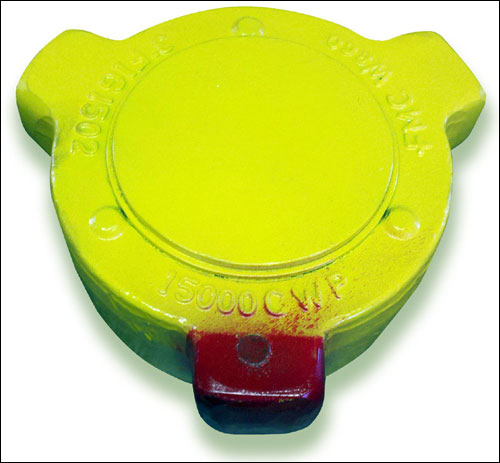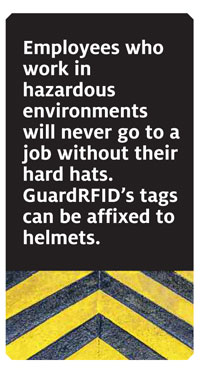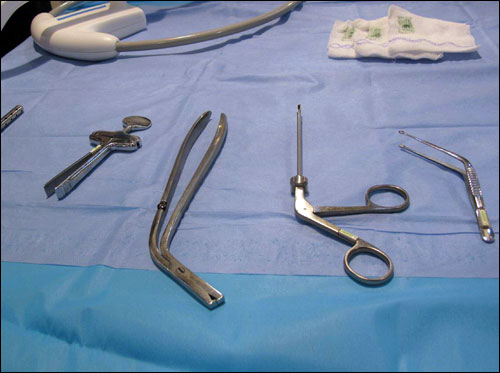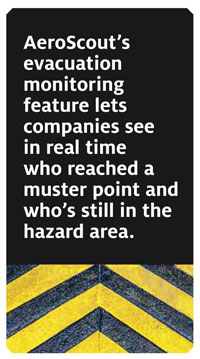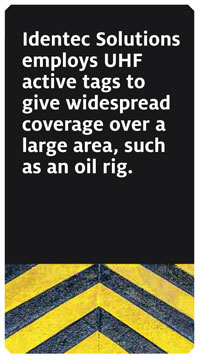Near Field Communication is a short-range, high-frequency (13.56 MHz) RFID technology designed to enable the exchange of information between two NFC-enabled devices, such as mobile phones. In 2004, Nokia, Philips (now NXP Semiconductors) and Sony founded the NFC Forum to ensure interoperability among NFC devices and promote the technology for applications such as access control, cashless payments and transit ticketing. They also envisioned that consumers would someday use NFC-enabled mobile phones to share telephone numbers, photos and MP3 files.
But they did not anticipate that vineyards would use NFC-enabled smartphones to improve productivity (see Argentine Winery Harvests Crops With RFID). Or that shoppers would use their NFC phones in retail stores to learn about products and availability (see Bon-ton Brings NFC to Shoe Displays). Or the many other NFC-based business and consumer applications companies are adopting—from improving patient care (see Brigham and Women’s Hospital Tests NFC RFID for Patient Bedsides) to marketing products (see The New ‘It’ Tool for Branding Products and Services). Other NFC applications include tracking assets and inspecting and maintaining equipment in industrial environments, such as aerospace, manufacturing, municipalities, and oil and gas, says Chris Gelowitz, president and CEO of InfoChip, which makes a line of NFC tags.
“We’ve certainly seen a lot of changes in the industry” in terms of how NFC is being used, says Victor Vega, director of RFID NFC solutions and marketing at NXP Semiconductors, which dominates the market for integrated circuits (ICs) that govern what NFC tags can do. “The industry started with transactions,” Vega says. “Now there are all these different emerging applications.”
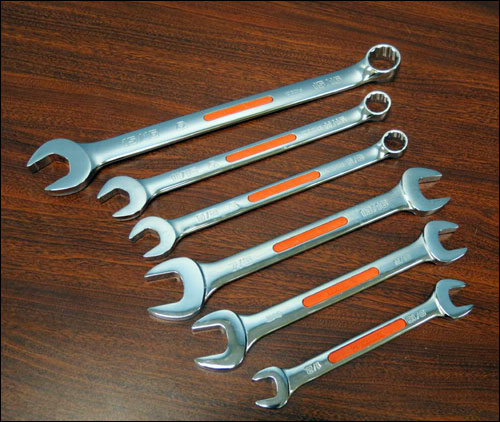
Several factors have led to the emergence of new applications. One is that an NFC tag—which can function as a passive tag or a reader, depending on the application—is present in the majority of mobile smartphones. In addition, RFID providers have developed NFC readers for PCs, laptops and other devices that accept USB peripherals. “More and more consumers have NFC-enabled smartphones, so the infrastructure problem has been solved,” Vega says. “With infrastructure so abundantly available, adoption is naturally much more well received as consumers now pull for the technology, rather than manufacturers pushing it into the marketplace.”
Another key factor is that RFID providers now offer a variety of NFC transponders in different sizes and form factors for specific business and consumer applications. Some were developed for key fobs, paper documents, smart posters and wristbands. Others are designed to track medical devices or activate and program consumer electronic devices. There also are rugged and on-metal NFC tags for tracking, inspecting and maintaining assets in industrial environments (see table on opposite page).
Consumers worldwide “are becoming more familiar with the benefits of NFC technology by way of NFC-enabled mobile payments, tickets, speakers, headphones, hotel-room door locks, car keys and event badges,” says Matthew Bright, chair of the NFC Forum’s Retail Special Interest Group and director of marketing at Kovio, which develops and manufactures printed silicon products for NFC. There is a growing number of applications “because NFC is fundamentally easy to use,” Bright says. “By simply touching an NFC-enabled device to an object with an integrated NFC tag, the user can trigger an interactive experience.” Unlike a QR code, which can take 15 seconds or more to read, he says, NFC tags can be read in a fraction of a second, making them “uniquely optimized for the fast-paced, mobile-first lifestyle that is rapidly emerging around the world.”
On the business front, ultrahigh-frequency passive RFID technology might have an advantage over NFC in that the consumable tags have longer read distances and are generally available at a lower cost, Vega says.
But while NFC is not likely to replace business applications in which data can be captured automatically, without human involvement, it can complement UHF RFID systems. NFC is preferable, for example, when the tags or assets need to be accessed by a wide group of people with their mobile phones, says Jari Ovaskainen, marketing director for tags and labels at Confidex, which provides both NFC and UHF passive tags. “UHF obviously brings benefits in use cases where its large read range and multiple asset reading [are needed] at the same time,” Ovaskainen states.
NFC’s short read range also makes it well suited to authentication applications, in which individuals are reading a small number of tags. “Many closed-loop applications require higher memory and various levels of security and password protection for authentication,” and would therefore use NFC, says Corey Wilson, global director of consumer experience for Smartrac, which also produces both NFC and UHF tags.
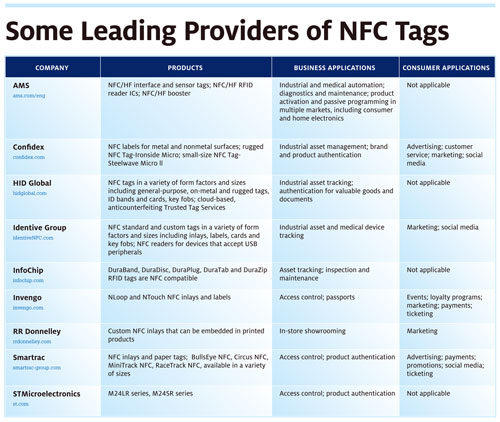
French wine maker Château Le Pin, for example, adopted an NFC solution to reduce counterfeiting. The distributors and auctioneers that sell the company’s wines can use any NFC-enabled Android phone to read the tags on the bottles and verify their authenticity (see Château Le Pin Uses NFC to Ensure Its Wine’s Authenticity). Similarly, Giulietti, a Finnish company that imports and resells accordions, is using an NFC solution to track the sale and servicing of the instruments (see NFC RFID Technology Puts the Squeeze on Accordion Thieves, Counterfeiters).
Here are some features to consider when choosing NFC tags for business and consumer applications.
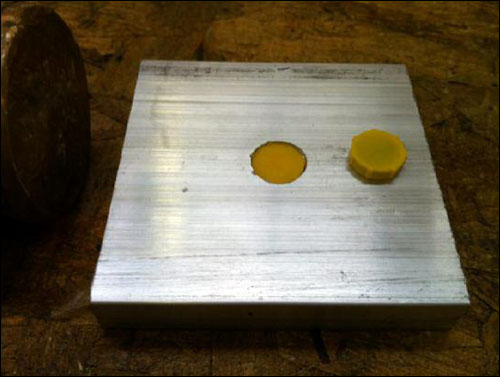
Read Range
An NFC tag’s read range is often affected by the NFC antenna in a mobile phone. “Assuming a state-of-the-art tag IC is used, the ‘coupling’ of the tag and the reader [for example, a mobile phone] antenna will have an impact” on read range, Vega says. “The ideal coupling [or energy transfer] would be accomplished when the tag and the reader antenna are similar in geometric shape and size,” he says. “But this is seldom the case, as NFC phone antennas vary wildly. Some are a bit on the small size, others are large. If there is a mismatch, the coupling is not optimal.”
Typically, Vega says, phones with larger antennas demonstrate the best results. “Also, in general, the larger the tag, the better the performance,” he adds. If, for example, a user has a mobile phone with a 2 inch by 2 inch antenna and the tag antenna is about the same, that’s about as good as it gets. “But assuming a nice-size reader antenna, a good rule of thumb is that the expected read range would be approximately the diameter of the tag coil,” he says.
So if you have a tag 30 millimeters (1.2 inches) in diameter, Vega says, common phones would average 20 millimeters to 40 millimeters (.8 inch to 1.6 inches) of read range. If you have a tag 25 mm (1 inch) in diameter, common phones would average 15 mm to 30 mm (.6 inch to 1.2 inches) of range. And if you have a tag measuring 18 mm by 36 mm (.7 inch by 1.4 inches), common phones would average 15 mm to 30 mm (.6 inch to 1.2 inches) of range.
InfoChip has a new DuraDisc in the works that enables a greater read range to enhance its scanning ability with NFC smartphones, Gelowitz says. “The idea is to be able to adhere the DuraDisc to a metal object like a valve or other oddly shaped object that has a nonflat shape that can interfere with the back of the phone being able to get close enough to the chip to scan it,” he says. “So if we increase the read range, the phone could be at an awkward angle or be impeded by an oddly shaped asset and still be able to scan the chip. It would take the read range from under [one-half inch] to potentially almost 2 inches.”
Security and Memory
Some NFC tags have built-in encryption and password-protected memory, and some do not. “Tag ICs come in various flavors,” Vega says. NXP, for example, offers a bare functionality tag with no security, ICs with a unique tag identifier to help with anticounterfeiting, and ICs that allow the end user to lock memory. The company also offers ICs with special provisions for anticounterfeiting via an “originality signature,” which uses elliptical curve cryptography to create a validation signature with the unique tag identifier and a private key, then stores the result in the tag so a company can use the tag identifier and a public key to validate the authenticity.
“Then we jump up the security chain with our MiFare line of products, where security can go from lightweight to extremely heavy encryption,” Vega says. “Inclusive of the level used for passports, transit tickets or for financial transactions, there are many options to choose from.”

HID Global offers Trusted Tag Services, a cloud-based platform that can validate NFC tags to thwart counterfeiting, says Richard Aufreiter, the company’s director of product management for identification technologies. The service is aimed at eliminating risks related to using NFC tags for authenticating high-value assets and documents, and for data login access.
There is a range of memory options for NFC tags. “Some of the more common NFC tags offer memory ranging from 48 bytes to 888 bytes,” Vega says. “And a new one we [NXP] just announced is offered in [approximately] 1 kilobyte and 2 kilobytes.” He says NXP’s MiFare line goes up to about 8 KB.
Size and Form Factor
Today, there is likely an RFID vendor that has an NFC inlay, label or tag for your application, and, if not, some offer custom tags.
A 10 mm by 20 mm tag is ideal for the backbone of a slim shelf stock package, while an 8.7 mm circular tag would typically be used for item-level identification in retail, says Nick Lukianov, director, business development, ID products, at Identive Group. The company’s 25 mm and 34 mm circular transponders are used in publications and posters for advertising, as well as in package identification, he says. “Generally, it is simpler to adjust the form factor of a transponder to fit a particular application as opposed to adjusting the mechanical design of a system to accommodate the transponder,” he notes.
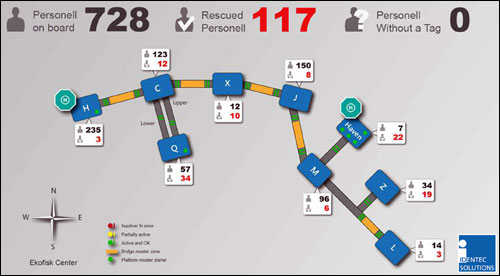
HID Global developed some small and thin NFC industrial tags by incorporating direct bonding capabilities into the tags, allowing the RFID wire antenna to connect directly to a microsize chip, without the need for a bulky module housing additional soldering material, Aufreiter says. For example, the company’s Piccolino tag has a 7.5 mm diameter, and its new LogiTag 121 has a 12 mm diameter.
“Small industrial tags are often embedded by customers into their goods or attached to them,” Aufreiter says. “Here, the smaller the form factor, usually the better it is, since it provides more freedom in placing the tag, and it enables the tracking of small tools and equipment.” Bagjack, a German messenger-bag manufacturer, is embedding HID’s NFC LogiTag in bags, for brand protection and to thwart counterfeiting (see Bag Maker Adopts RFID Solution to Prevent Counterfeits, Gray Market). Tags that come in coil form, such as the Piccolino or ClearDisc, are typically embedded by customers directly into their products—for example, a biological probe-vial or a consumable cartridge, Aufreiter says.
InfoChip recently developed an NFC DuraPlug tag that is only 2 mm thick. “Our intended markets for this tag are medical equipment and drilling assets,” Gelowitz says.
Advancements
Some NFC tag providers are beginning to add sensor capabilities to NFC tags. Ams, for example, provides sensor tags that are designed specifically for the cold chain, health-care and logistics markets, says Giancarlo Cutrignelli, the company’s senior product manager for NFC. “The main targeted applications are data logging and monitoring,” he says.
Confidex’s Ovaskainen sees NFC sensor tags as a future trend, and says the company has the capabilities to design and manufacture NFC tags that include temperature and other sensors. NFC tags and labels will not only identify objects, they will also sense them and their environments, he says.
Efforts are under way to further expand the use of NFC. Roughly a year ago, the NFC Forum launched five special-interest groups designed to support and accelerate NFC’s adoption in key vertical markets: consumer electronics, health care, payment, retail and transport. The groups bring together leaders from each sector to collaborate on implementation, interoperability, best practices and future requirements.

